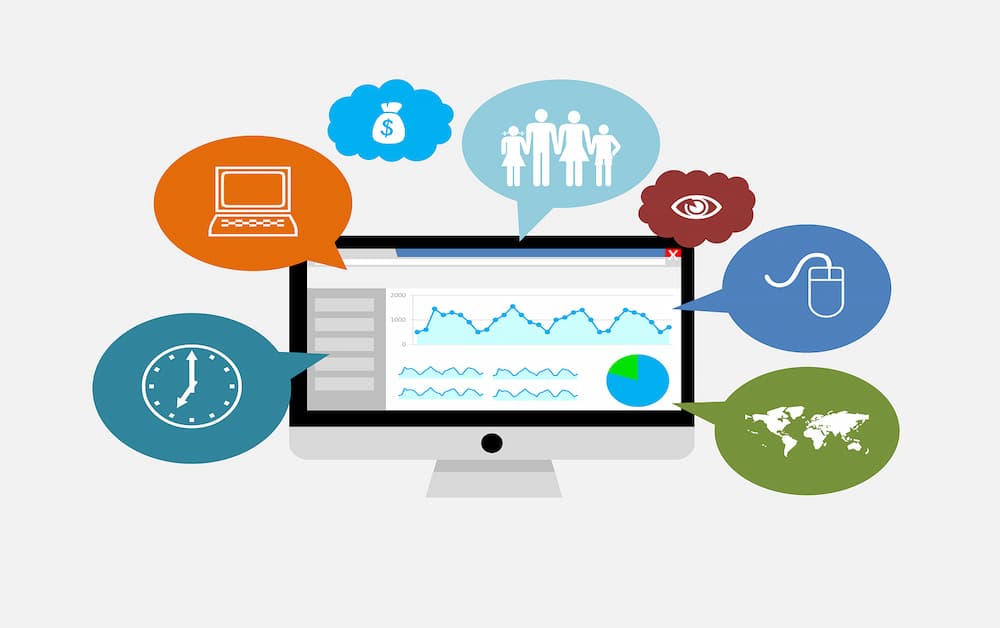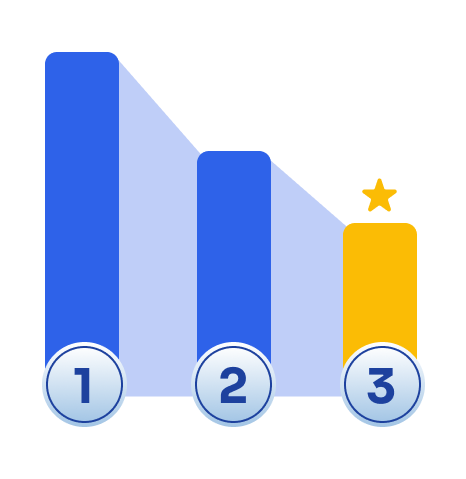Introduction
Google Ads is a powerful tool that has become a cornerstone of online advertising strategies for businesses across the globe. One of the most critical features that sets this platform apart is its conversion modeling, which is crucial in optimizing marketing efforts and driving exceptional results. Conversion modeling is the process of predicting the likelihood of a user taking a desired action on a website, such as completing a purchase or filling out a form.
With this data, Google Ads can help advertisers identify which keywords, ads, and targeting options are most effective at driving conversions, allowing them to make informed decisions about how to allocate their ad spend. By leveraging this powerful tool, businesses can optimize their campaigns, improve their return on investment, and ultimately drive more revenue and growth.
Understanding conversion modeling
Google Ads conversion tracking allows advertisers to monitor the effectiveness of their campaigns by tracking specific user actions, such as website visits, form submissions, or purchases. However, traditional last-click attribution models provide only a limited view of the customer journey, often overlooking the various touchpoints that lead to a conversion. To address this limitation, Google introduced data-driven attribution modeling, leveraging machine learning algorithms to comprehensively understand conversion paths and their relative impact on business objectives.
Data-driven attribution offers a holistic view of users interacting with ads across different devices and touchpoints before completing a desired action. By analyzing user behavior and identifying the most influential marketing channels and ad placements, advertisers gain deeper insights into the customer journey and can optimize their targeting strategies accordingly. This enhanced understanding enables businesses to allocate their ad spend more effectively, maximizing the impact of their marketing efforts and driving enhanced conversions.
Leveraging the power of Google Analytics
In conjunction with Google Ads, Google Analytics is a powerful tool for tracking and analyzing conversion data. By integrating Google Analytics with Google Ads, advertisers can gain a complete view of their customers’ interactions across various marketing channels and devices. This integration allows for a seamless flow of data between platforms, providing advertisers with valuable insights into user behavior and the effectiveness of their advertising campaigns.
Google Analytics’ property column enables advertisers to track conversions accurately and attribute them to specific campaigns, ad groups, or keywords. This level of granularity empowers advertisers to measure the performance of individual marketing channels and optimize their targeting strategies based on conversion rates and other key metrics. Moreover, by analyzing conversion paths and identifying the most effective touchpoints, advertisers can refine their ad copy, landing pages, and overall user experience to drive maximum impact and achieve their business objectives.

How does Google Analytics help track and analyze conversion data?
Google Analytics provides robust tools to track and analyze conversion data, enabling businesses to understand user behavior and optimize their marketing strategies effectively.
Conversion tracking: Google Analytics allows users to set up conversion tracking, which monitors specific actions that users take on a website, such as purchases, form submissions, or sign-ups. This tracking provides insights into the effectiveness of various marketing channels and campaigns in driving conversions.
Key events: In Google Analytics 4, conversions are created from key events, providing a consistent method for measuring essential actions across both Google Analytics and Google Ads. By tracking key events, businesses can understand user interactions that lead to conversions and optimize their websites accordingly.
Conversion rate analysis: Google Analytics calculates the conversion rate, which is the number of conversions divided by the total number of visitors to a website. Analyzing conversion rates helps businesses gauge the effectiveness of their website and marketing efforts in converting visitors into customers.
Goal tracking: Users can set up goals in Google Analytics to track specific actions or events that contribute to conversions, such as reaching a particular page, spending a certain amount of time on the site, or completing a form. Goal tracking provides insights into user engagement and helps businesses optimize their website and marketing campaigns to achieve desired outcomes.
Conversion attribution: Google Analytics offers various attribution models, such as first-click, last-click, linear, time decay, and position-based, to analyze how different touchpoints contribute to conversions. By understanding the relative impact of each touchpoint, businesses can allocate their resources effectively and optimize their marketing strategies for maximum ROI.
Maximizing conversions with enhanced insights
The integration of Google Ads and Google Analytics provides advertisers with a comprehensive understanding of their target audience and the effectiveness of their advertising efforts. By leveraging various attribution models, advertisers can gain deeper insights into how different touchpoints contribute to conversions and adjust their marketing strategies accordingly. Whether it’s last-click attribution, first-click attribution, or data-driven attribution, each model offers a unique perspective on the customer journey, enabling advertisers to make data-informed decisions and optimize their advertising campaigns for maximum effectiveness.
What are the different attribution models in Google Ads?
In Google Ads, there are several attribution models available for advertisers to choose from, each providing a different perspective on how conversions are attributed to various touchpoints along the customer journey:
Last click: This model attributes all credit for a conversion to the last click a user made before completing the desired action. It’s a straightforward model but may overlook earlier interactions that contributed to the conversion.
First click: Contrary to the last-click model, the first-click model assigns all conversion credit to the first interaction a user had with an ad before converting. It emphasizes the initial touchpoint in the customer journey.
Linear: In the linear attribution model, credit for a conversion is evenly distributed across all interactions a user had with ads leading up to the conversion. It gives equal importance to each touchpoint along the customer journey.
Time decay: This model attributes more credit to interactions that occurred closer in time to the conversion. It assumes that interactions closer to the conversion are more influential and assigns them proportionally more credit.
Position-based: Also known as the U-shaped model, this attribution model gives 40% of the credit to both the first and last interactions, while the remaining 20% is distributed among the interactions in between. It acknowledges both the initial touchpoint and the final conversion-driving touchpoint.
Data-driven: Data-driven attribution utilizes machine learning algorithms to analyze conversion paths and attribute credit to touchpoints based on their actual contribution to conversions. It offers a more sophisticated and accurate understanding of the customer journey.

Advantages of utilizing data-driven attribution modeling
Data-driven attribution modeling offers several advantages for marketers seeking to understand and optimize their advertising efforts.
Firstly, it removes biases towards specific marketing channels or touchpoints, providing an unbiased view of each channel’s contribution to conversions. This enables marketers to make more informed decisions about budget allocation, ensuring resources are invested in the most impactful channels and campaigns.
Moreover, data-driven attribution provides granular insights into user behavior and the customer journey, allowing marketers to understand precisely how users interact with their ads and which touchpoints are most influential. This clarity leads to improved strategy optimization, as marketers can focus on the channels and touchpoints that drive the highest return on investment.
In summary, data-driven attribution modeling empowers marketers to make informed decisions, allocate resources wisely, and achieve better results from their advertising efforts.
Best practices for optimizing conversion modeling in Google Ads
Define clear objectives: Clearly outline your objectives for conversion modeling. Whether it’s optimizing marketing campaigns, improving ad placements, or increasing conversions, having defined goals is crucial.
Utilize data: Base your optimization decisions on data rather than gut feelings. Analyze conversion data, user interactions, and customer journey insights to inform your strategies.
Optimize landing pages: Create landing pages that are optimized for both search engine optimization (SEO) and conversion rate optimization (CRO). Incorporate compelling visuals, clear calls-to-action, and streamlined navigation to enhance user experience.
Continuous testing: Implement A/B testing and multivariate testing to evaluate different aspects of your ads, such as ad copy, visuals, and landing page layouts. Continuously test and iterate to identify the most effective strategies.
Monitor performance: Regularly monitor the performance of your Google Ads campaigns and conversion modeling efforts. Use analytics tools to track key metrics, identify trends, and make necessary adjustments to optimize performance.
Conclusion
Businesses rely on digital marketing to reach their target audience and drive sales. Google’s conversion modeling is a powerful tool that helps businesses better understand user behavior. With conversion modeling, businesses can analyze data to gain insights into how customers interact with their ads, from the initial click to the final purchase. This information is essential for businesses to optimize their ad campaigns, target the right audience, and improve user experience.
Through tracking metrics, businesses can adjust their advertising strategies to achieve the best possible results and maximize their return on investment. Google’s conversion modeling also provides businesses with the ability to track their advertising performance and identify areas for improvement. By fine-tuning their strategies, businesses can achieve their business objectives in a highly competitive online environment.
In conclusion, Google’s conversion modeling is an essential tool for digital marketing success. It offers businesses accurate representation and deeper insights into user behavior, empowering them to optimize their advertising strategies, drive exceptional results, and achieve their business objectives. With conversion modeling, businesses can gain a competitive advantage in the digital landscape by understanding their target audience and delivering ads that resonate with them.




